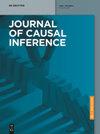A Lasso approach to covariate selection and average treatment effect estimation for clustered RCTs using design-based methods
IF 1.8
4区 医学
Q2 MATHEMATICS, INTERDISCIPLINARY APPLICATIONS
引用次数: 0
Abstract
Abstract Statistical power is often a concern for clustered randomized control trials (RCTs) due to variance inflation from design effects and the high cost of adding study clusters (such as hospitals, schools, or communities). While covariate pre-specification can improve power for estimating regression-adjusted average treatment effects (ATEs), further precision gains can be achieved through covariate selection once primary outcomes have been collected. This article uses design-based methods underlying clustered RCTs to develop Lasso methods for the post-hoc selection of covariates for ATE estimation that avoids a lack of transparency and model overfitting. Our focus is on two-stage estimators: in the first stage, Lasso estimation is conducted using data on cluster-level averages or sums, and in the second stage, standard ATE estimators are adjusted for covariates using the first-stage Lasso results. We discuss l 1 {l}_{1} consistency of the estimated Lasso coefficients, asymptotic normality of the ATE estimators, and design-based variance estimation. The nonparametric approach applies to continuous, binary, and discrete outcomes. We present simulation results and demonstrate the method using data from a federally funded clustered RCT testing the effects of school-based programs promoting behavioral health.基于设计方法的聚类随机对照试验协变量选择和平均治疗效果估计的Lasso方法
由于设计效应带来的方差膨胀和增加研究集群(如医院、学校或社区)的高成本,统计能力通常是聚类随机对照试验(rct)关注的问题。虽然协变量预规范可以提高估计回归调整平均治疗效果(ATEs)的能力,但一旦收集了主要结果,就可以通过协变量选择进一步提高精度。本文使用基于设计的聚类随机对照试验方法来开发Lasso方法,用于ATE估计的协变量事后选择,以避免缺乏透明度和模型过拟合。我们的重点是两阶段估计器:在第一阶段,Lasso估计是使用簇水平平均值或总和的数据进行的,在第二阶段,使用第一阶段Lasso结果调整标准ATE估计器的协变量。我们讨论了估计Lasso系数的1 {l}_{1}一致性、ATE估计量的渐近正态性和基于设计的方差估计。非参数方法适用于连续、二值和离散结果。我们展示了模拟结果,并使用联邦资助的聚类随机对照试验的数据展示了该方法,该试验测试了以学校为基础的项目促进行为健康的效果。
本文章由计算机程序翻译,如有差异,请以英文原文为准。
求助全文
约1分钟内获得全文
求助全文
来源期刊

Journal of Causal Inference
Decision Sciences-Statistics, Probability and Uncertainty
CiteScore
1.90
自引率
14.30%
发文量
15
审稿时长
86 weeks
期刊介绍:
Journal of Causal Inference (JCI) publishes papers on theoretical and applied causal research across the range of academic disciplines that use quantitative tools to study causality.
 求助内容:
求助内容: 应助结果提醒方式:
应助结果提醒方式:


